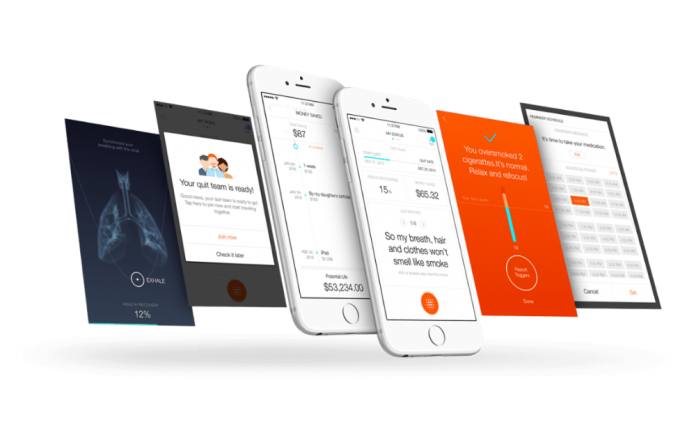The digital therapeutics industry has been experiencing a tremendous boost in recent years, especially under the COVID-19 pandemic hit, with a projected market value of $9 billion (USD) by 20251.
The prowess of digital therapeutics has been widely recognized. Harnessing the technological advances, they have the potential to complement traditional treatments and address unmet patient needs. By connecting to a smart device, a DTx application can collect, synchronize and analyze the health data, enabling the HCPs to efficiently provide patients with real-time interventions at a lower cost.
However, all of this has the following two preconditions:
- Clinical Efficacy – Patients will only adopt and stick to treatments that have shown to be effective.
- User Engagement – No matter how many medical and technical resources a DTx product has, it will be of no avail if the patient cannot complete the assigned tasks as prescribed.
Inspirations from MARS
Although DTx can improve patient adherence by breaking the limitation of space and time compared to traditional treatments, people have the innate potential of resisting anything that feels like work or tasks. For this issue, this article will provide an in-depth analysis of innovative DTx companies based on the Mobile Application Rating Scale (MARS), which is one of the most widely used frameworks that evaluates the quality of health-related apps and e-tools. Four dimensions were derived: engagement, functionality, aesthetics and information quality. Within the dimension of engagement, questions were subdivided as below:
- Engagement/Interest:
-
- Is the app/e-tool interesting/ entertaining to use?
- Does it have components that can stimulate repeat use?
- Does it use any strategies to increase engagement by presenting its content in an interesting way?
- Customization:
-
- Does the app/e-tool allow users to change settings such as sound, content, notifications, email/SMS reminders, and display more to their liking?
- Does it retain all necessary settings/preferences for app features?
- Interactivity/Interoperability:
-
- Does it allow user input, provide feedback, and contain prompts (reminders, sharing options, notifications, etc.)?
- Does the app/e-tool adapt the content based on user input?
- Does it allow the exchange of data with other apps, e-tools or wearable devices (if applicable)?
- Target group:
-
- Is the content (visuals, language, design) appropriate for the target audience?
Global Case Studies
Here are some techniques DTx companies deployed to improve user adherence.
Boke, a veteran player in China’s game industry, has launched “Happy Vision Planet” this year. Happy Vision Planet” is a strabismus and amblyopia treatment system for children co-developed by HCPs and medical experts. It is also the first gamified DTx product approved by NMPA in the domestic market.
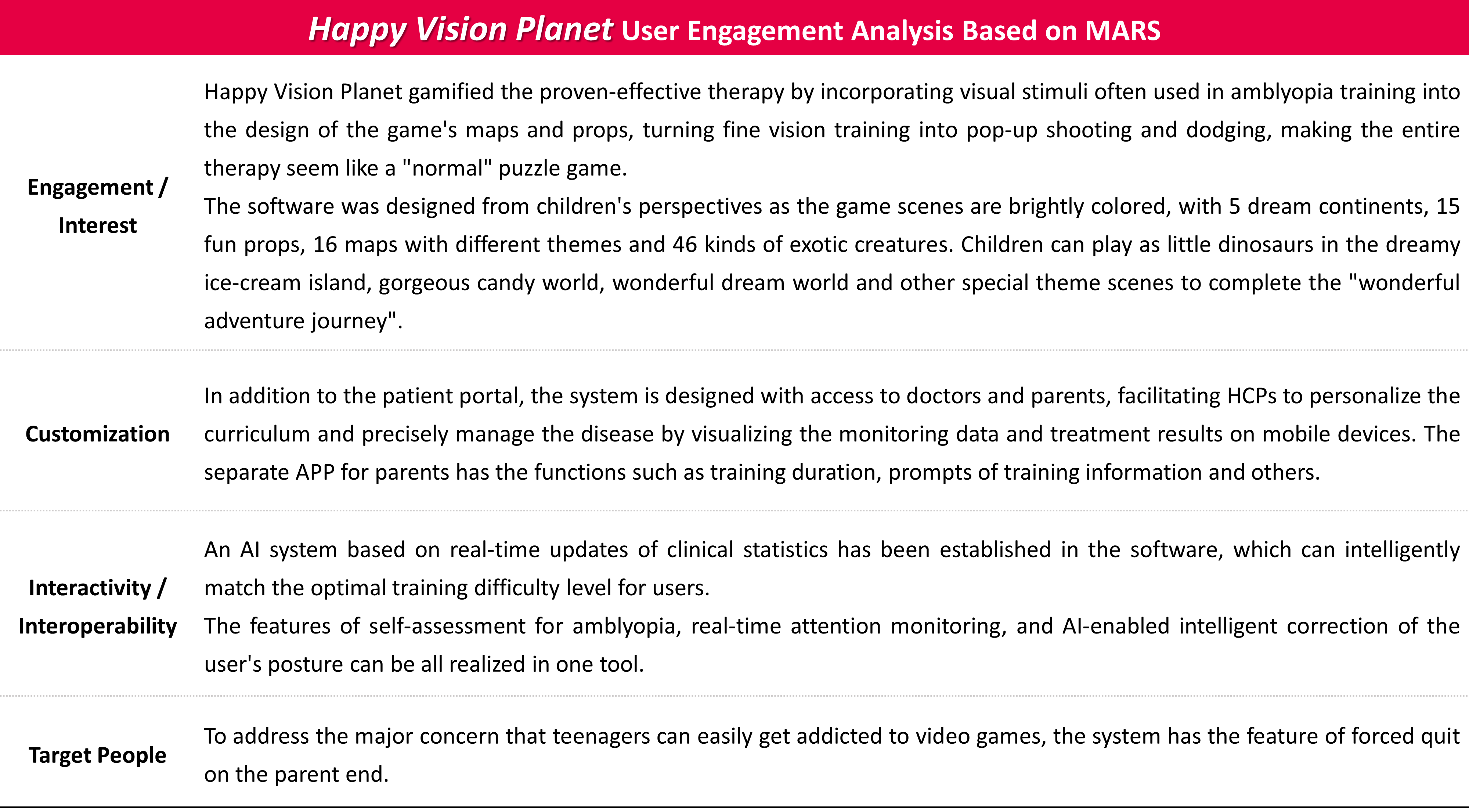
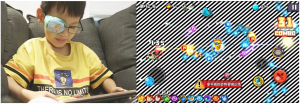
May 5, 2022, Sidekick Healthcare, a Nordic startup, has netted $55 million in Series B funding to bolster its digital therapeutics program — a video-game-like smartphone software aiming to help users digitally manage their nutrition, exercise, sleep, stress and adherence to medications. By enhancing usability with gamification measures, stimulating user adherence to behavioral economics, and ensuring the efficacy of the program with clinical trials, Sidekick App has achieved high stickiness and management efficiency. Attaining over 30,000 users, it has been rated as the top 0.1% in quality by the industry’s leading rating company Orcha.
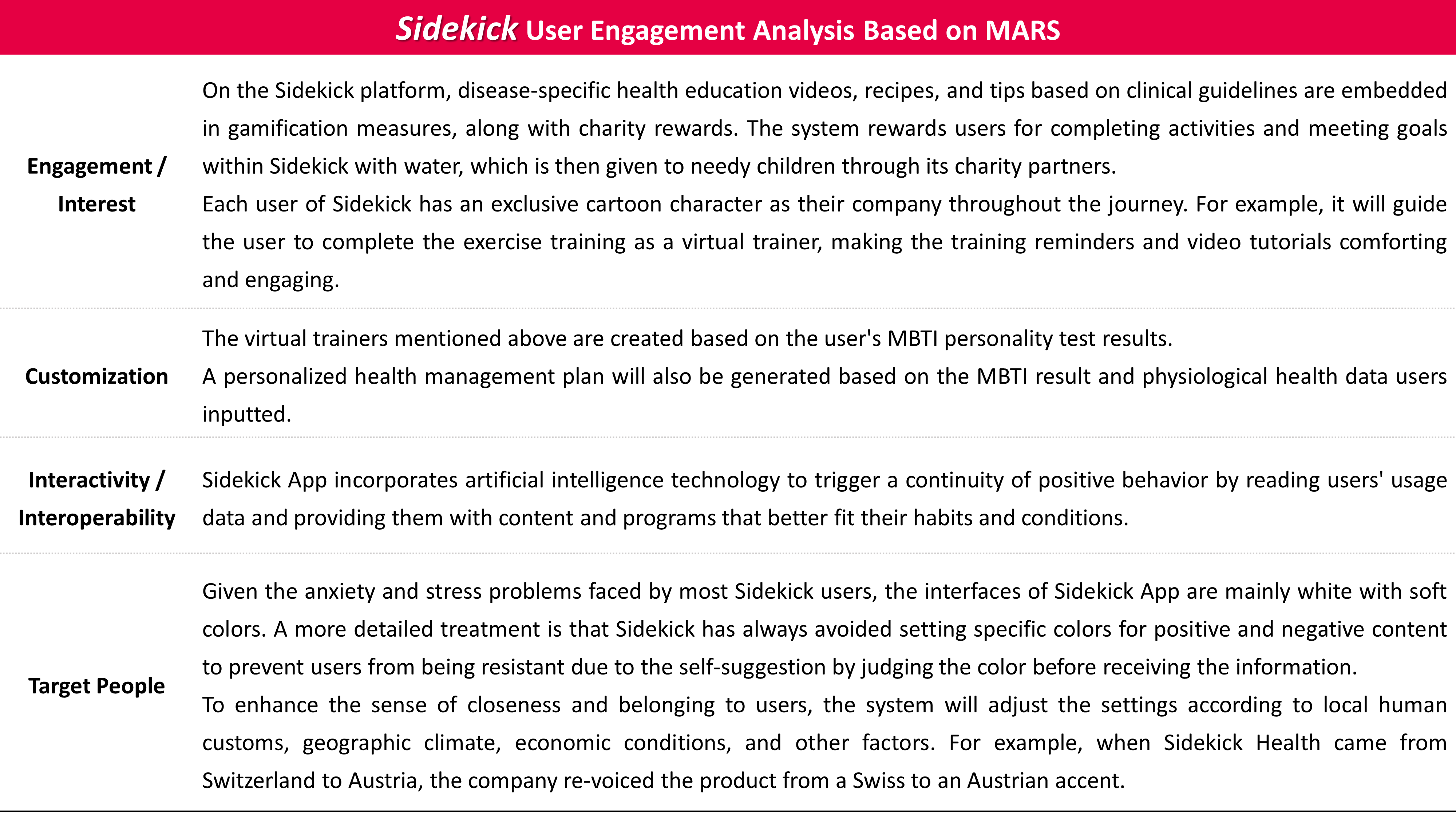
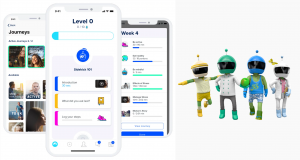
Sanvello Health is a leading digital mental healthcare provider, and the company’s digital platform holds the #1 search position for stress and anxiety in app stores, covering users exceeding 3.5 million people. The research has shown that the participants interacting with Sanvello were nearly five times more than with traditional therapy2. As an evidence-based mobile care solution created by clinical experts, Sanvello bridges gaps in the mental health system, providing an immersive mental healthcare experience. The services include CBT-based guided journeys, coping tools like meditation, journaling tools, coaches and therapist counseling, and a peer community.
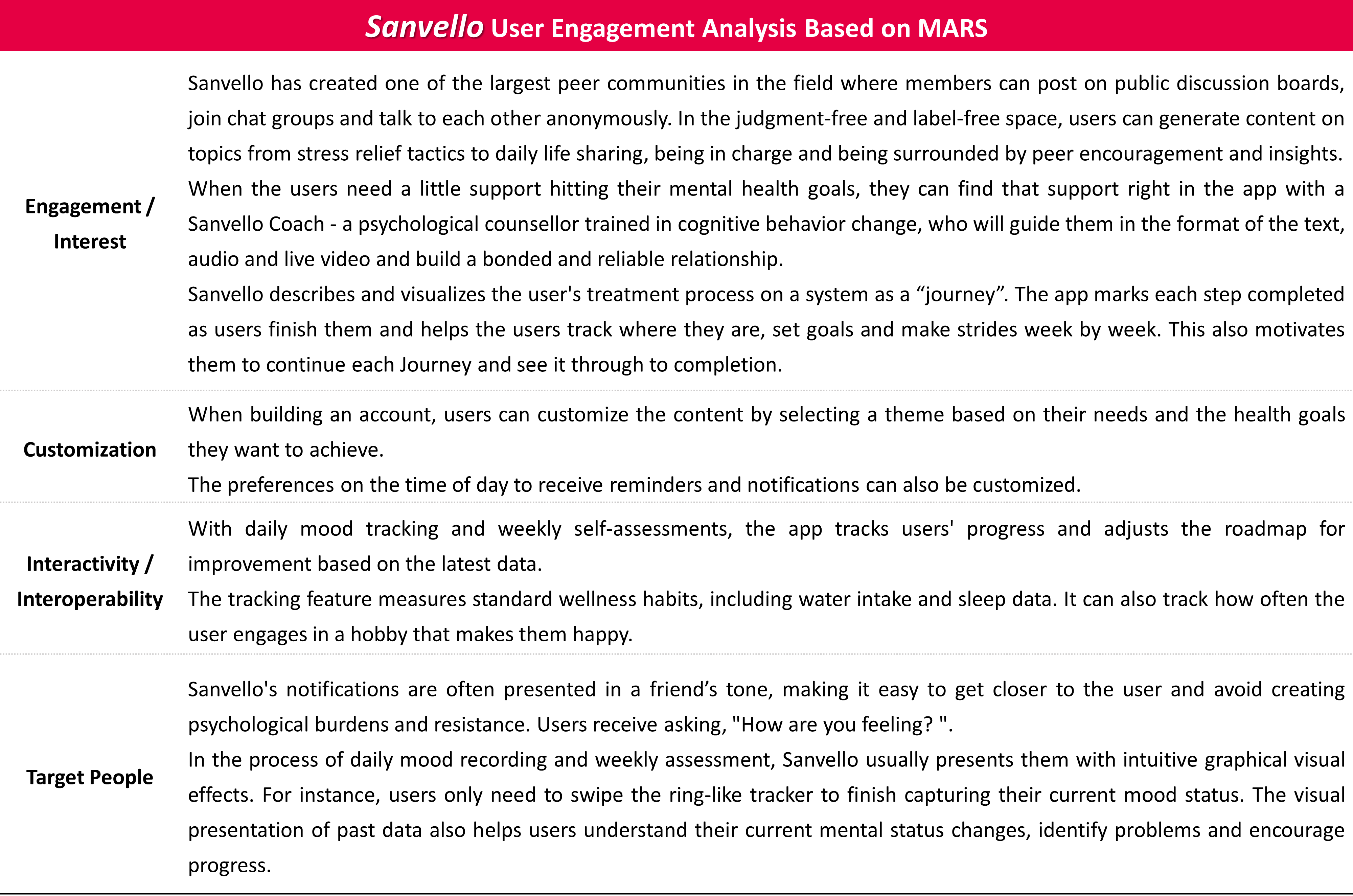
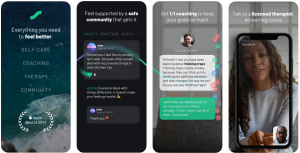
After analyzing the above three companies based on MARS focusing on user engagement, we notice that the five questions can link to two stages of the customer lifecycle – activation and retention. For DTx products, how to activate the patients to use the products corresponds to the aspects of engagement and interest in MARS. After acquiring customers, how to provide service and experience of high quality to form a bonded and dependent relationship with users corresponds to the questions of customization, interactivity and user-friendly design. Therefore, we will also summarize how digital therapeutics companies can improve user engagement from these two perspectives of the user lifecycle.
- User Activation – Engagement and Interest
Notably, DTx platforms are using gamification mechanics to activate users to change their behaviors. Mostly seen methods are enhancing the health benefits existing in the game itself and designing reward systems and financial incentives to motivate user engagement. Any app that moves you to a new roadmap, rewards points or charity achievements for completing a task – typically a wellness challenge – is a form of gamification.
Through gamification and adding game-like elements into the therapy process, the provider can easily turn the patients into active participants in their health management and improve their health literacy. It reminds and encourages patients with chronic diseases to take their medication, bringing users instant gratification which traditional treatments usually lack.
Additionally, in the gamification segment, the trend of integrating it with technologies such as VR or AR to make cognitive or physical rehabilitation more fun and engaging is attention-worthy.
- User Retention – Customization, Interactivity and User Segmentation
User-generated content has not been a novel concept for most people, exploding in popularity in the internet, technology and retail industries. The prevalence unveiled one of the natures of communities as it can shift our mindset through increasing intimacy with peers and a sense of unity. It is unearthed that the same strategies in the DTx industry are applied — communities can be a way of treatment for users as well as a source of solace and inspiration.
Vibrant peer communities, efficient therapist counseling and even the company of virtual characters can help users form a sense of belonging and self-worth, which alleviates users’ psychological stress and increases their stickiness. Besides that, some little ingenuity in the interactivity design, such as the tone and accent, can also get twice the result with half the effort in getting closer to the users.
There is no doubt that the efficacy is one of the ultimate reasons for customers to rely on a product, and for DTx products, that is, users can personally feel the improvement of their conditions. From the cases above, it is seen that all three companies have adopted AI technology to achieve the precision management of diseases where the comprehensiveness and accuracy of data collection lie at the heart of a top-notch algorithm. Therefore, for data-driven systems, UX/UI design is arguably the spine of product development. Products should follow a UX/UI design process with a user-centric mindset to make the interface as intuitive as possible. And the user journey must be organized in a transparent and clear manner that evokes trust and fluency, which is particularly important considering many of the digital therapeutics users are children or the elderly. Simply put, make sure that your products are not just usable but also useful.
The target groups of DTx products often have more lumped characteristics deserving attention. For example, products for children often require parent portals or monitoring tools to further ensure treatment effectiveness and avoid possible pitfalls.
REFERENCE
- LaRock Z. Digital Therapeutics Explained: DTx Market Trends and Top Companies Delivering on the Latest Digital Health Opportunity, Business Insider, Dec 18, 2019. Available at: https://www.businessinsider.com/digital-therapeutics-report. Accessed: March 2, 2020.
- Lan, A., Lee, A., Munroe, K., McRae, C., Kaleis, L., Keshavjee, K., & Guergachi, A. (2018). Review of cognitive behavioural therapy mobile apps using a reference architecture embedded in the patient-provider relationship. Biomedical engineering online, 17

